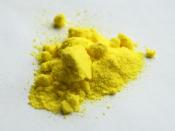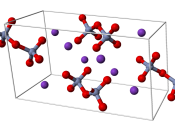Introduction
The chemical oxygen demand (COD) is a measure of the amount of oxygen consumed by the organic material within a water sample that is oxidized by a strong chemical oxidant, such as potassium dichromate (K2Cr2O7). Its main use is as an indicator of the organic and inorganic matter within water and effluent discharge giving a quantitative value of water quality. There are other tests that are also used to measure the organic content of a water body, such as the biological oxygen demand test. The biological oxygen demand (BOD) and can be found by collecting a sample from the watercourse and incubating it at 200C for five days, and calculating the oxygen used over the incubation period (Harrison 1996). The COD is often used when other methods are not as effective to be used. One advantage of the COD test over other tests, such as the BOD test is that it is relatively fast to carry out, for example the BOD test takes place over a five-day incubation period whilst the COD tests can be carried out in 2 hours; hence provides a much quicker indication of water quality.
This property of the test has resulted in a wide range of usage when monitoring and controlling the organic content of industrial waste from effluent systems and the receiving water bodies.
Dichromate is often used as the oxidizing agent when determining the COD due to its ability to oxidise most materials and ease of manipulation (Chapman 1996). Test allows the organic matter within a sample to reduce the dichromate; any remaining dichromate is titrated with ferrous ammonium sulphate, FeSO4.(NH4)2SO4, where the Fe2+ ions are oxidised to Fe3+ by the remaining dichromate ions, Cr2O72-. The dichromate (Cr2O72-) is dissolved into a salt by the addition of sulphuric acid...


